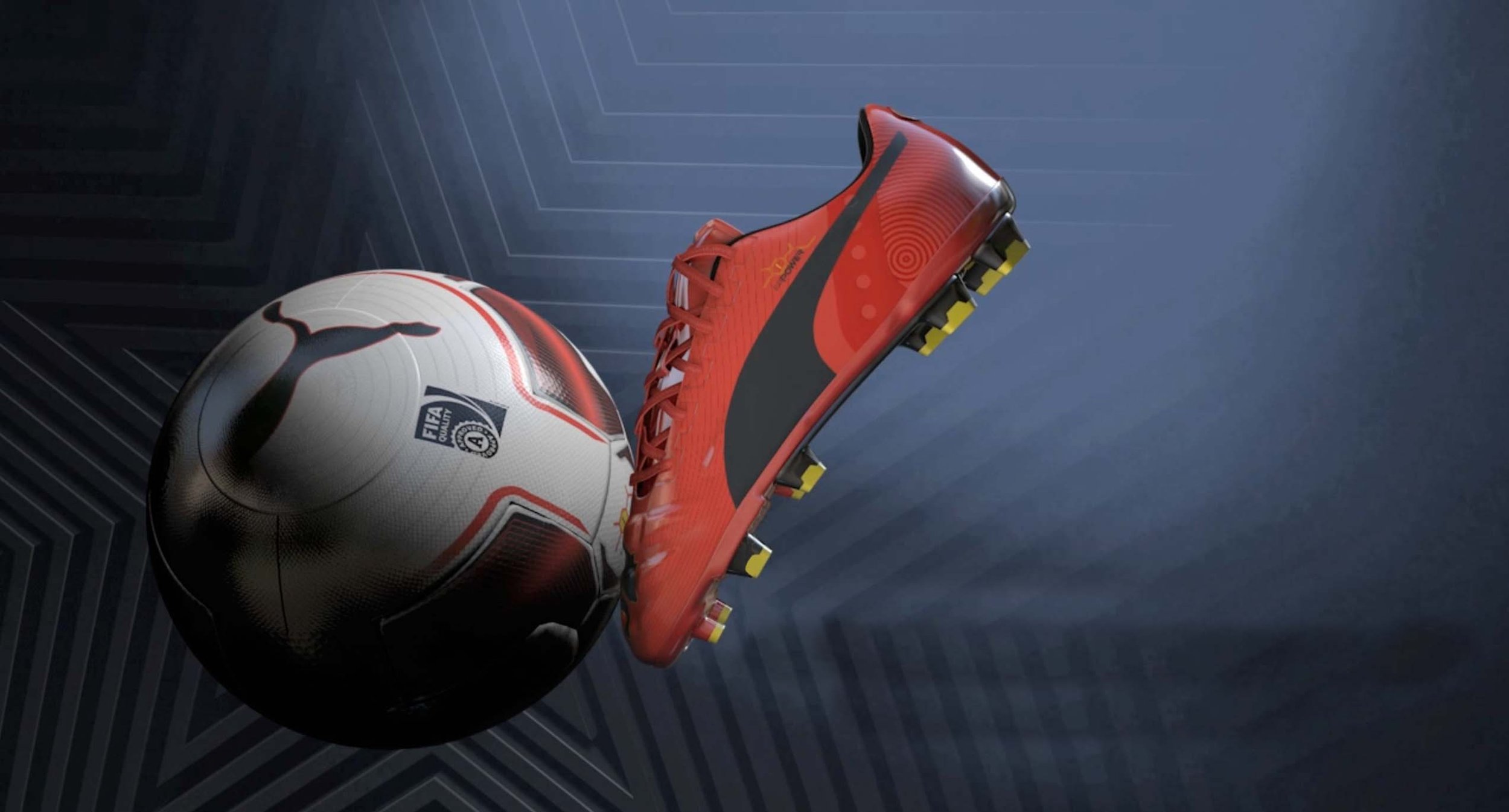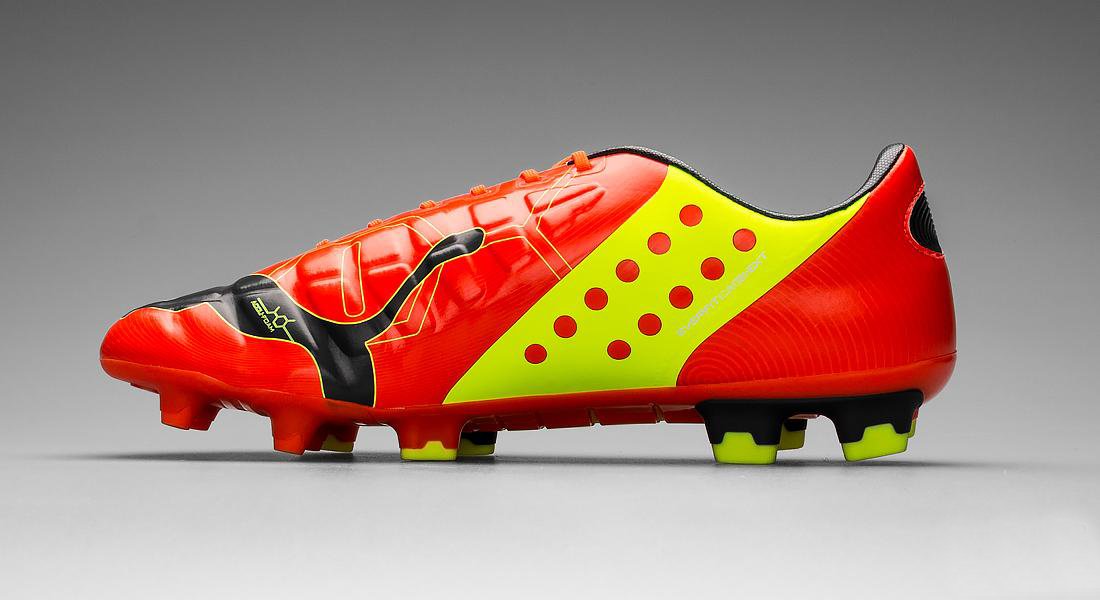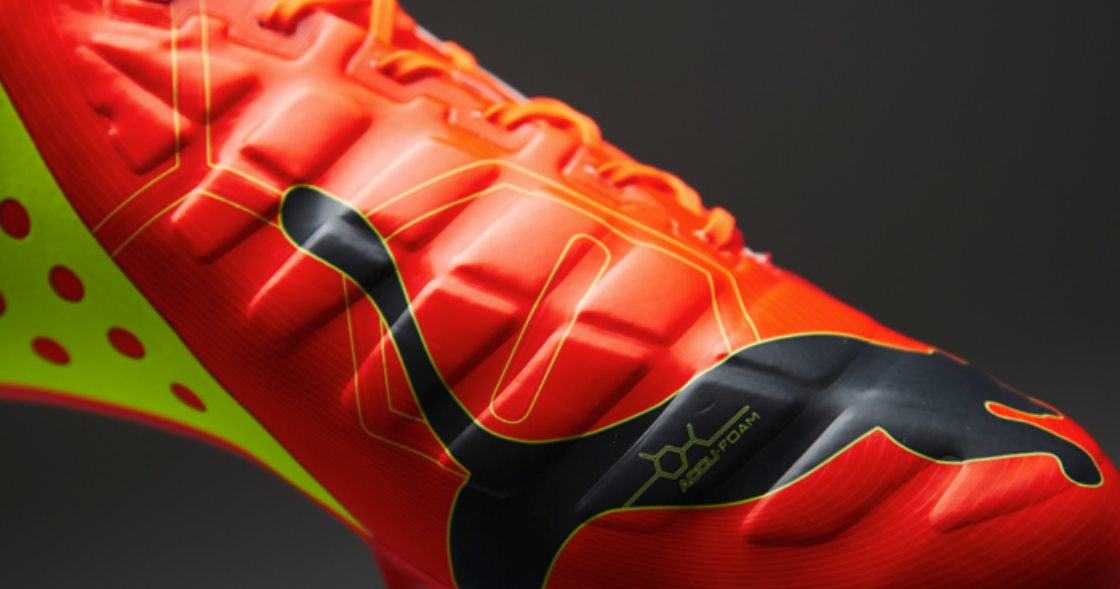
The Pursuit of Power
In the mid-2010s, football boot technology was succinctly defined by two performance distinctions; so-called Speed and Power. Speed shoes were light and promoted agility while power shoes promoted forceful contact with the ball. In 2014 Puma product line managers introduced a brief for a new power football boot. At the time I was Head of Footwear Design so the challenge came to me and my team.
The truth is that our competition defined the power segment in football boots. In 1994 Adidas launched the Predator, a leather football boot with an engineered panel of rubber-like material in the front of the shoe. Four years prior I remember when Craig Johnston, the professional footballer turned inventor showed up with a small black bag at Adidas Headquarters in Herzogenaurach where I was working as a designer in the Advanced Product Group. What was in that bag was the beginning of a football technology dynasty that would last nearly three decades. After that initial introduction, year after year Adidas would find new ways to put rubber-like material in different configurations on the toe of the shoe. That became the industry standard for a power football boot.
When Knowing Less Amounts To More
By the time I arrived at Puma I had designed footwear for nearly every type of land sport except football. While that might have placed me at a disadvantage, the truth ended up being the opposite. Because I knew so little about what it took to deliver performance in football, I was forced to start at the beginning. And that is what unveiled a beautifully simple solution.
The Kick
Designing performance footwear goes far beyond looks. There are many choices a designer can make which determine how well a shoe will function in the sport for which it is designed. In this case what helped in decision making was understanding the biomechanics behind kicking a football. Careful consideration of this brings clarity when solving the problem of improving kicking power. Above we can see the what occurs in the kicking motion. Below we can see the parts of a football boot that can influence kicking performance in the stages of kicking. This information was part of what helped shape our innovation recipe.
Barefoot Is Best
At Puma Headquarters we were staffed with people who understood biomechanics, the physiology of the foot and how it behaves in sport. We also had access to leading scientists at universities with whom we commissioned research to uncover findings that would help us design and develop performance products. It was there that our work began.
We had learned that a good amount of research was done on the topic of kicking a football. Our research partner University of Chemnitz did an in depth study on the effects different football boots had on delivering power to the ball as well as how accurately a ball could be manoeuvred toward the a goal. Further, studies showed that there is a tradeoff between power and accuracy and therefore a high performance football boot should promote the right mix of both. Power or ball velocity was measured with a radar gun. A special test was developed to measure accuracy. What we discovered not only astonished us but also defined the trajectory of our work.
By then not only Adidas produced power shoes but also Nike, Puma and others. Scientific comparisons were made between products from all brands. To fully understand the effect of the foot kicking a ball the baseline was determined by conducting the same tests with the bare foot.
Final test results showed that the shoe that delivered the best combination of velocity and accuracy was not a power shoe. In fact it was not a shoe at all. Data showed that the best tool for kicking a football was the bare foot. Knowing this we named our concept Natural Power.
The Power/Accuracy Equation
We knew that although the bare foot was best, we could not put elite level athletes on the pitch without shoes. Not only would traction be compromised but also protection. Careful review of the biomechanics of kicking a football with both high velocity and high accuracy uncovered two things. 1. A minimal amount of restriction of the foot and 2. An even contact surface. Those two aspects allowed us to define a recipe for designing a shoe that most resembled performance of the bare foot. We determined that both the bottom and the upper portions of the shoe should be designed in a way that would minimize restriction. And we determined that the area on the upper which comes in contact with the ball should be designed in a way that moderated the boney structures in the foot.
Research Methdology
From that point the work we had ahead of us was clear. We knew that we could effect both velocity and accuracy through the architecture of the parts of the shoe and the selection of the materials. We defined a methodology for testing a series of prototypes beginning with a wide range of variables in material and architecture and ending with the fewest variables.
Testing in the field and in the laboratory.
Measuring kicking velocity at the University of Chemnitz. Here scientists used a radar gun to track the speed of the ball.
This is not a torture device. Testing for the Natural Power concept did not only include field testing but also laboratory testing using specially developed equipment. In this test foot rotation is measured which helped determine how restrictive a shoe was.
-

3D Sketch
The first physical representations of the Natural Power concept design.
-

Test Mule
An early prototype designed for testing purposes.
-

Marco Reus Prototype
Refined prototype designed for Dortmund superstar Marco Reus.
Introducing evoPOWER






How Powerful is EvoPower?
A fun look at EvoPower as put to the test by professional players Cesc Fàbregas, Marco Reus and Mario Bolatelli.
This special version of the EvoPower was made for Mario Balotelli in celebration of his homeland, Italy.
EvoPower Makes All-Time Best List
Project Profile
What is it?
A new and unique performance football boot technology that uses the principle of barefoot mechanics to promote power and accuracy.
Why is it innovative?
Because it defied industry convention. Rather than adding elements EvoPower minimised the parts of the shoe in order to enable the foot to move naturally. Less is more.
What were the biggest challenges?
Getting stakeholders in the business and industry to accept an approach that countered the trend.
What was your role? Technology Enabler, Collaboration Leader, Chief Evangelist
Chief Evangelist, Research Enabler, Concept Designer.
Why was it successful?
It established a category dynasty at a time when Puma had limited offerings in the football space. It helped put Puma Football “back on the map”.













